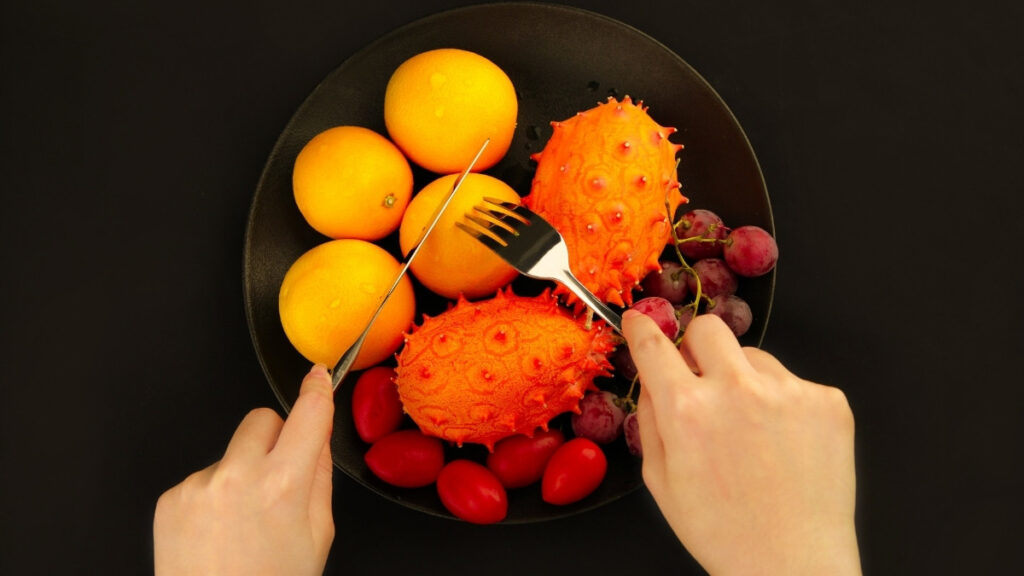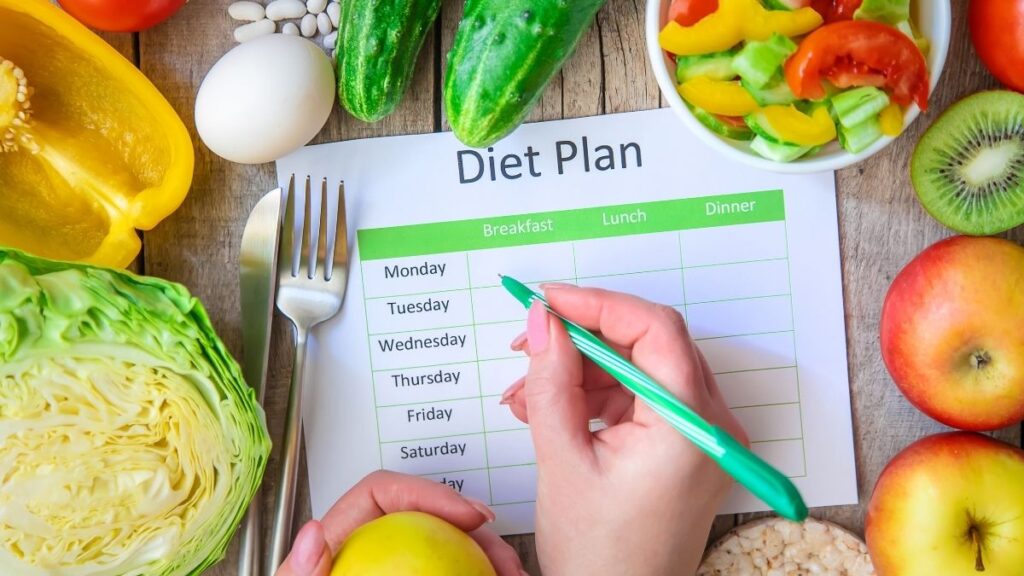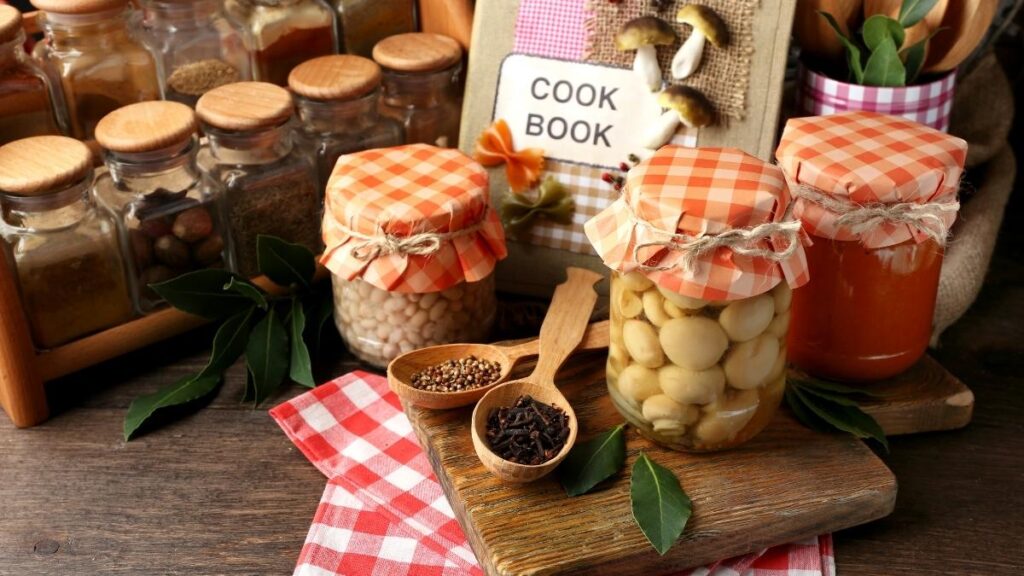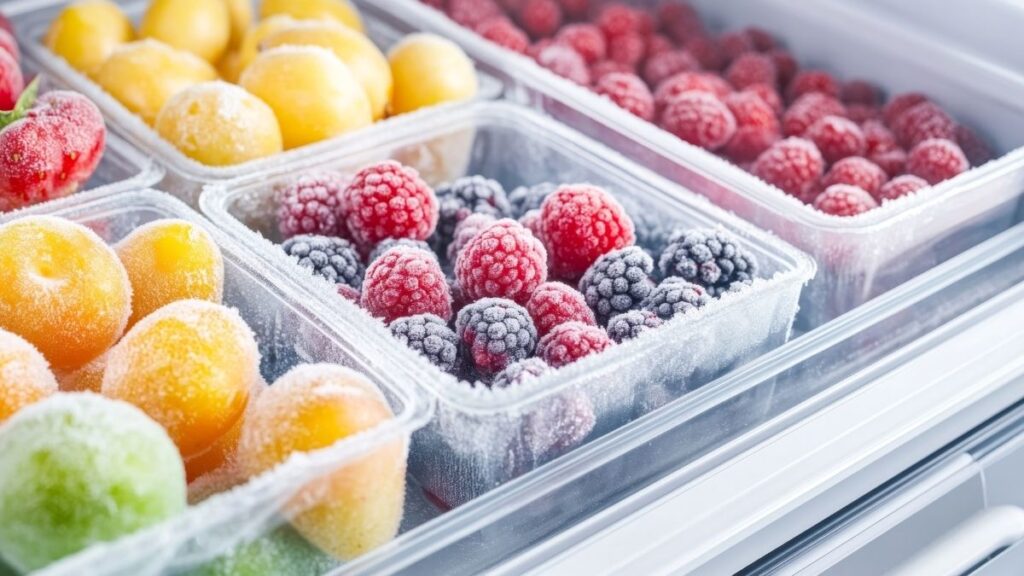I Tried the “30-Plant Challenge” for a Month—My Gut Has Never Been Happier
For years, I lived in a “meh” zone—sluggish, bloated, and mentally foggy despite my “healthy-ish” diet. I was stuck in a food rut, eating the same handful of vegetables on repeat while my energy levels sputtered.
Then I discovered the new gold standard for gut health: eating 30 different plants a week. This wasn’t another restrictive diet; it was a call for diversity and abundance. It sounded daunting, but I took the challenge.
A month of tracking herbs, seeds, and every color of the rainbow transformed my energy, digestion, and relationship with food. Here’s how I did it.
The Breaking Point: Why I Declared War on My Unhappy Gut
The “Meh” Zone
For months, maybe even years, I had been living in the “meh” zone. It wasn’t a state of actual illness, but a persistent, low-grade feeling of being off.

My energy levels felt like a bad Wi-Fi signal—fine one minute, buffering the next, and prone to dropping out completely by 3 p.m.. I’d finish a perfectly healthy meal only to be met with an annoying, persistent bloat that made my waistband feel like a vice.
I was tired of feeling sluggish, uncomfortable, and mentally foggy for no discernible reason.
The “Aha!” Moment: Discovering the Science of Diversity
My “aha!” moment didn’t come from a doctor’s office, but from a podcast I was listening to while commuting.

An expert, Professor Tim Spector of King’s College London, was discussing a concept that completely reframed my understanding of healthy eating. He wasn’t talking about calories, carbs, or even portion sizes.
He was talking about diversity. The new goal, he explained, wasn’t just to eat five plants a day, but to eat 30 different plants a week.
- Better Digestion: A wide array of microbes helps your body break down food more efficiently and absorb more nutrients.
- A Stronger Immune System: With an estimated 70% of our immune cells residing in the gut, a diverse microbiome helps “train” our immune system to respond appropriately to threats while reducing chronic inflammation.
- Improved Mental Health: The gut and brain are in constant communication via the “gut-brain axis.” A healthy gut produces neurotransmitters like serotonin and dopamine, which can directly impact mood and cognitive function.
- Reduced Risk of Chronic Disease: Studies have linked high microbial diversity to a lower risk of conditions like heart disease, type 2 diabetes, obesity, and even certain types of cancer.
Each plant we eat contains different types of prebiotics (specialized fibers) and polyphenols (beneficial plant compounds) that act as fuel for different species of “good” bacteria. Eating only broccoli and spinach is like feeding only two workers on a massive construction site.
To build a strong, thriving city, you need to feed all the workers—the electricians, the plumbers, the masons. The 30-plant challenge was a blueprint for doing exactly that.
Gearing Up: The Rules, The Strategy, and a Reality Check
Decoding the Challenge: What Actually Counts?
Before I could start, I needed to understand the rules of the game. The idea of 30 plants sounded intimidating, but the definition of a “plant” is wonderfully broad and inclusive.
Decoding the 30-Plant Challenge: What Counts?
Vegetables
All of them—leafy greens, roots, brassicas, alliums (onions, garlic).
Fruits
Berries, citrus, apples, bananas, tomatoes, avocados.
Whole Grains
Oats, quinoa, brown rice, barley, buckwheat, whole wheat.
Legumes
All beans, lentils, chickpeas, peas, and soy products like tofu.
Nuts & Seeds
Almonds, walnuts, cashews, chia seeds, flaxseeds, pumpkin seeds.
Herbs & Spices
Both fresh and dried, from parsley and basil to turmeric and cinnamon.
Rule: Variety
Each unique plant counts as 1 point per week. The goal is variety, not repetition (e.g., bananas every day = 1 point total).
Rule: Colors
Different colors of the same plant count as separate points (e.g., a red, yellow, and green bell pepper count as 3 points).
Rule: ¼ Points
Herbs, spices, coffee, tea, and dark chocolate (70%+) count as ¼ point each due to their small quantities but high polyphenol content.
Rule: Exclusions
Refined foods generally don’t count. The focus is on whole or minimally processed foods that feed your gut.
I learned that the system, popularized by experts like Dr. Megan Rossi (“The Gut Health Doctor”), breaks down plant foods into six main groups, often called the “Super Six”.
- The “Super Six” Plant Groups:
- Vegetables: All of them—leafy greens, roots, brassicas, alliums (onions, garlic).
- Fruits: Berries, citrus, apples, bananas, tomatoes, avocados.
- Whole Grains: Oats, quinoa, brown rice, barley, buckwheat, whole wheat.
- Legumes: All beans, lentils, chickpeas, peas, and soy products like tofu.
- Nuts & Seeds: Almonds, walnuts, cashews, chia seeds, flaxseeds, pumpkin seeds.
- Herbs & Spices: Both fresh and dried, from parsley and basil to turmeric and cinnamon.
The point system was simple yet nuanced, designed to encourage maximum diversity:
- Each unique plant variety counts as 1 point per week. If I ate a banana every single day, it still only contributed 1 point to my weekly total. The goal is variety, not repetition.
- Different colors of the same plant count as separate points. This was a game-changer. A red bell pepper, a yellow bell pepper, and a green bell pepper count as 3 points, not 1. This is because the different colors are produced by different polyphenols, which feed different gut microbes.
- Herbs and spices count as ¼ point each. Because they are consumed in smaller quantities, they are given a fractional value. However, their cumulative effect is significant.
- Coffee, tea, and dark chocolate (70% cocoa or higher) also count. These are rich in beneficial polyphenols and are typically counted as ¼ point.
Crucially, the focus is on whole or minimally processed foods. Refined products like white bread, white pasta, and sugary fruit juices without their fiber generally don’t count toward the goal.
My Game Plan: From Overwhelmed to Organized
Success in this challenge, I quickly realized, wasn’t going to be about willpower; it was going to be about preparation. It was an exercise in planning as much as it was in eating. I broke my prep down into three simple steps.

Step 1: The Plant Audit. Before changing a thing, I tracked my intake for a typical week. This was a critical piece of advice I’d seen in other people’s accounts of the challenge. I opened a simple spreadsheet and logged every plant I ate. The result was both humbling and encouraging.
I was averaging just 14 different plants a week. While far from 30, it was a solid starting point. I wasn’t starting from zero, and the audit clearly showed me where my “diversity deserts” were: I ate plenty of vegetables but almost no nuts, seeds, or legumes.
Step 2: Choosing a Tracking Method. The spreadsheet had worked for the audit, so I decided to stick with it. I created a new sheet with columns for each day of the week and a running list of unique plants on the side. Every time I ate a new plant, I’d add it to the master list and check it off.
For those less inclined to spreadsheets, a simple notebook, a phone’s notes app, or a dedicated app like “Thirty Plants” would work just as well. The tool didn’t matter; the act of tracking did.
Step 3: The Strategic Grocery Haul. My first shopping trip for the challenge was a lesson in “addition and swaps.” I didn’t throw out my entire pantry. Instead, I made small, strategic upgrades that would have a big impact on my plant count.

- Instead of just romaine lettuce, I bought a bag of mixed salad leaves. (Plant points: +4).
- Instead of just a can of chickpeas, I bought a can of a four-bean mix. (Plant points: +3).
- Instead of just fresh strawberries, I bought a large bag of frozen mixed berries. (Plant points: +3).
- I bought a bag of mixed nuts and a small container of mixed seeds (chia, flax, hemp) to create a “confetti” topper for yogurts and salads.
This approach made the goal feel immediately more manageable. I hadn’t radically changed my meal plans, but with a few simple swaps, I had set myself up to double my plant intake without even trying. The bridge between my intention and my action was built.
The Journey: A Week-by-Week Diary
Week 1 to 3: The Awkward Overachiever
The main challenge this week was breaking out of my vegetable rut. On Tuesday, I stood in the produce aisle and intentionally bought something I rarely cooked with: fennel.
Journey to 30 Plants a Week
Week 1: The Awkward Overachiever
- Result: 26 Plants
- Key Win: Broke a rut by trying a new food (fennel).
- Feeling: Energized & Optimistic
Week 2: Hitting the Wall
- Result: 23 Plants
- Challenge: Cost & Time
- Budget Hack: Used canned beans, frozen veg, & bulk grains.
- Time Hack: Made quick “pantry raid” grain bowls.
Week 3: Finding the Rhythm
- New Mindset: Shifted from tracking to creativity.
- Hack 1: “Confetti Topper” (mixed seeds) on everything.
- Hack 2: “Power of the Mix” (always buying mixed greens/beans).
- Hack 3: Used fresh herbs as a main ingredient, not a garnish.
- Feeling: Tangible benefits (bloat disappeared!).
I found a simple recipe online for a shaved fennel and orange salad and was shocked by how delicious and refreshing it was. It was a small act, but it felt like a significant win, expanding my culinary horizons in a way I hadn’t in years.
I ended the week with a tally of 26 plants. Not quite 30, but a massive leap from my baseline of 14. I felt energized, engaged with my food, and optimistic.
Week 4: The Effortless Expert

By the final week, the “challenge” was no longer a challenge at all. It was simply how I ate. Tracking felt less like a chore and more like a satisfying game I was winning every day.
My cooking had become more creative, my palate more adventurous. I was trying new things not for the points, but for the pure joy of discovering new flavors and textures.
The peak benefits I had been hoping for were now my new normal.
- Physically: My digestion was flawless. I felt lighter, more vibrant, and my skin even looked clearer, a benefit others have reported as well. The constant, low-grade discomfort I had accepted as normal was completely gone.
- Mentally: I felt a profound sense of empowerment. I wasn’t just passively hoping to feel better; I was actively taking steps that were making a difference. The decision fatigue that used to surround my meal choices was replaced by a simple, joyful framework: add more plants.
I ended the month with a celebratory dinner: a large, colorful stir-fry with tofu, broccoli, red bell pepper, snow peas, carrots, mushrooms, and onions, seasoned with ginger, garlic, and soy sauce, served over brown rice and topped with sesame seeds and fresh cilantro.
Without even thinking about it, the meal contained over a dozen different plants. My final weekly count was 38. I had not only met the goal, but I had surpassed it, and in the process, I had transformed my relationship with food and my own well-being.
The Verdict: Was It Worth It?
After a month of meticulous tracking and conscious effort, the answer is an unequivocal yes. The transformation was far more profound than I had anticipated, extending beyond the promised “happier gut.”
| Challenge | Before the Challenge | After the Challenge |
| Energy | Fluctuating, with a significant afternoon slump. | Stable and consistent throughout the day. |
| Digestion | Frequent bloating and irregularity. | Smooth, predictable, and comfortable. |
| Diet | Monotonous, rotating through the same 10-15 plants. | Diverse and creative, easily hitting 30+ plants. |
| Mindset | Food choices felt restrictive and sometimes stressful. | Cooking felt joyful, abundant, and empowering. |
This personal shift is a direct reflection of the science. As the author Giulia Enders writes, “Every day we live and every meal we eat we influence the great microbial organ inside us – for better or for worse”.28 For a month, I consciously chose to influence it for the better, and the results were undeniable.
My Lifelong Takeaways: It’s Not About the Number
As the experiment ended, I was left with a few crucial lessons that will stick with me long-term.

Takeaway 1: Perfection Isn’t the Point. The goal of 30 is a powerful motivator, but it’s not a pass/fail test. Some weeks, life will get in the way, and I might only hit 20 plants. Other weeks, I might hit 40 without trying. The true victory lies in the overall pattern of prioritizing diversity, not in achieving a perfect score every single week.3
Takeaway 2: It’s a Mindset, Not a Diet. The most significant and lasting change was psychological. I no longer see meals through the lens of restriction. Instead, every plate is an opportunity to add color, flavor, and variety—to actively nourish the trillions of microbes that support my health.
Takeaway 3: A Gentle System is Key. I’ll be honest: when I stopped tracking for a few days after the month was over, some of my old, monotonous habits started to creep back in. The experience taught me that I, like many people, thrive with a little bit of structure.
Your Turn: The Ultimate Guide to Conquering the 30-Plant Challenge

Feeling inspired to start your own journey to a happier gut? It’s far more achievable than it sounds. This guide is your roadmap, packed with the most effective strategies and tips to make hitting 30 plants a week simple, affordable, and delicious.
To show you just how quickly the points can add up, here is an example of what three days of eating could look like. Notice how ingredients are reused to minimize waste and how simple additions boost the count.
Table 1: A 3-Day, 25-Plant Meal Plan Example
My 3-Day Plant Point Plan
Day 1
+11 PlantsBreakfast
- Cinnamon
- Walnuts
- Chia Seeds
- Raspberries
- Blueberries
Lunch
- Lettuce
- Arugula
- Lemon
Dinner
- Lentil
- Carrots
- Celery
Day 2
+9 New PlantsBreakfast
- Spinach
- Mushrooms
- Wheat
- Sunflower Seeds
Lunch
- Quinoa
- Chickpeas
- Cucumber
- Red Onion
- Parsley
Dinner
- (Re-used)
Day 3
+5 New PlantsBreakfast
- Banana
- Almond Butter
- Hemp Seeds
Lunch
- Kidney Beans
- Black Beans
Dinner
- (New items)
Running Total (Goal: 30)
The 30-Plant Starter Kit: Stock Your Pantry for Success
Set yourself up for success by having a variety of shelf-stable, budget-friendly items on hand. Your pantry is your best ally in this challenge.

- Canned Goods: At least one can of mixed beans, chickpeas, various lentils (red, green, brown), and chopped tomatoes.
- Frozen Foods: Mixed berries, chopped spinach, peas, edamame, and a mixed vegetable medley (like a stir-fry or ratatouille mix).
- Whole Grains: Rolled oats, quinoa, brown rice, whole-wheat pasta, and buckwheat.
- Nuts & Seeds: A large bag of mixed, unsalted nuts and separate containers of chia seeds, flaxseeds, and hemp seeds. Tahini (sesame seed paste) is also a great staple.
- Herbs & Spices: A basic collection including turmeric, cumin, oregano, cinnamon, ginger, and dried garlic.
15 Easy Hacks to Boost Your Plant Count Instantly
Incorporate these low-effort tips into your daily routine, and you’ll be surprised how quickly the points add up.
15 Easy Plant-Boosting Hacks!
- Mixed Salad Greens: Swap single-variety for a mixed bag.
- Mixed Beans/Lentils: Add to soups, stews, and sauces.
- Berries & Seeds: Top your morning yogurt or oatmeal.
- Secret-Weapon Smoothies: Blend greens, fruits, and seeds.
- Seeded Bread: Choose multi-grain or seeded bread.
- Smart Snacks: Try mixed nuts or veggie sticks with hummus.
- Fresh Herbs: Use generous amounts as a key ingredient.
- “Traffic Light” Peppers: Buy red, yellow, and green.
- Fermented Foods: Add kimchi or sauerkraut to meals.
- Flavor Base: Start dishes with onion, garlic, and celery.
- Legume Pasta: Try pasta made from chickpeas or lentils.
- Roast Mixed Veggies: Prep a big batch for the week.
- Soup Mixes: Use multi-bean and grain soup packets.
- Sprinkle Spices: Add cinnamon to coffee or turmeric to eggs.
- Tahini Dressings: Use sesame-based tahini for dressings.
Eating the Rainbow on a Budget
Worried about the cost? You don’t need to shop exclusively at high-end health food stores to achieve plant diversity. Smart shopping is key.

- Embrace the Freezer Aisle: Frozen fruits and vegetables are flash-frozen at peak ripeness, locking in nutrients. They are often cheaper than fresh, available year-round, and dramatically reduce food waste.
- Love Your Legumes: Dried and canned beans and lentils are nutritional powerhouses. They are incredibly inexpensive sources of protein and fiber and can be used to stretch more expensive ingredients like meat.
- Buy in Bulk: Grains like oats and rice, as well as many nuts and seeds, are often significantly cheaper when purchased from bulk bins.
- Shop Seasonally: Buying produce that is currently in season is almost always more affordable and flavorful.
- Reduce Food Waste: Get creative with leftovers. Use wilting herbs and vegetables in soups, stews, stocks, or smoothies. A weekly meal plan can help ensure you use up everything you buy.
Expert Corner: A Final Word of Encouragement
The journey to better gut health is not about a drastic overhaul but a joyful addition of diversity to your plate. As dietitian and gut health expert Dr. Megan Rossi emphasizes, the goal is to focus on inclusion, not exclusion. “The more diversity in your diet, the more diverse the nutrient supply for your gut microbes,” she explains. “Well fed, happy gut microbes equals a happier, healthier gut!”.
So start small. Add one new plant to your grocery list this week. Swap your usual snack for a handful of nuts. Sprinkle some seeds on your breakfast. Every small step is a victory for your gut, and you might just find, as I did, that the road to a happier gut is also a more delicious and exciting one.








